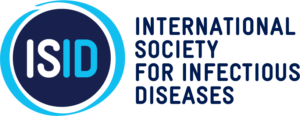In July 2022, the World Health Organization (WHO) declared the multi-country mpox outbreak as a Public Health Emergency of International Concern (PHEIC). [1] One year on, the global epidemic has led to a cumulative total of almost 90,000 cases including 152 deaths, as of August 2023.[2] While over 95% of the cases came from Europe and the Americas, the Western Pacific had notified the majority of new cases between mid-July and early August 2023. In China, 491 cases were reported in the month of July.[2] Elsewhere in Asia Pacific, new infections from local transmission were spotted in Hong Kong, Taiwan, Thailand, signifying that mpox is no longer an “imported” condition. (ProMED posts https://promedmail.org/ – PRO/AH/EDR> Mpox update (33): China, Australia) Similar to the situation in western countries,[3] men who have sex with men (MSM) are bearing the brunt of the epidemic, while people living with HIV were disproportionally represented. Thus far, there have been relatively few research reports on the epidemiology and clinical characteristics of mpox in Asia Pacific.
The escalating mpox outbreaks in the Asia Pacific came as a surprise, which happened after WHO announced an end to the PHEIC, just three months ago in May 2023, while the corresponding spread in Europe and the Americas appeared to be slowing down. With a good proportion of infected persons having mild or even no symptoms, the known cases might have accounted for a minority of all incident mpox infections. Community unawareness, the labelling of mpox as a stigmatized sexually transmitted infection, and the lack of effective surveillance… Are some of the reasons behind its silent spread. With an effectiveness of 60-70% (after 2 doses), [4] the mpox vaccines are generally unavailable in most places in Asia Pacific. In China, the recent outbreaks have prompted the government to issue new control guidelines and update their enhanced border control. The effectiveness of public health measures can easily be diluted by the increased openness of cities and countries in the post-COVID-19 era. The removal of mpox as a PHEIC might have misled health authorities that the worst has passed. Coordinated efforts within country and internationally countries are needed to turn the tide.[5]
Shui Shan Lee, MD
Editor-in-Chief
International Journal of Infectious Diseases (IJID)
